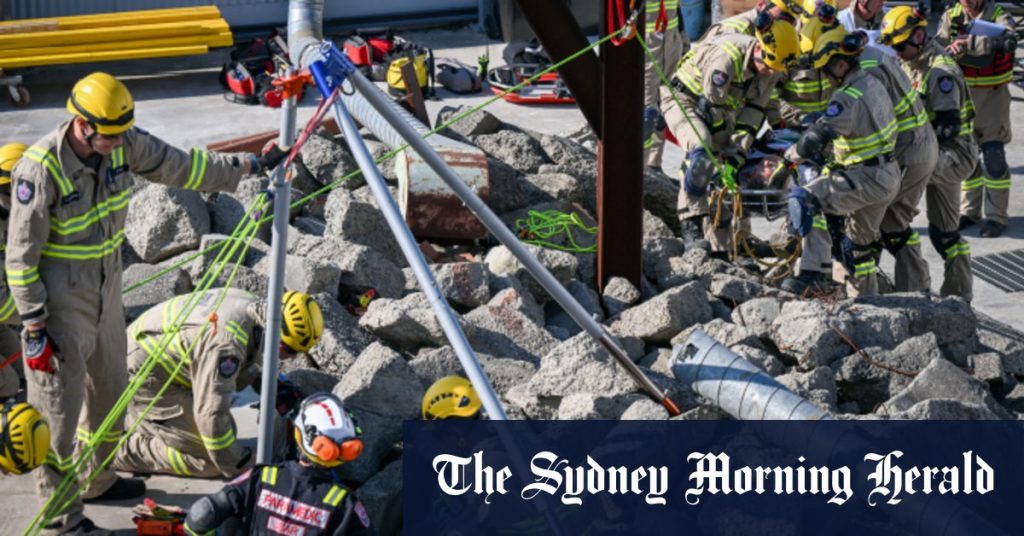The article discusses a counter-terrorism exercise conducted by emergency agencies in Melbourne, Australia, following recent terror-related incidents involving teenage boys in New South Wales and Western Australia. The simulation involved a scenario where a terrorist cell had detonated a bomb in a residential building, causing a collapse and multiple casualties. The drill aimed to test the coordination between different emergency agencies in responding to a major terrorist attack. The exercise included 200 participants from various departments, including media liaison officers and observers from other states and countries.
The drill was meticulously planned over nine months to create a realistic scenario that would challenge the skills of first responders. The responders had to deal with wounded civilians, trapped individuals, and the threat of another potential attack by the terrorist group claiming responsibility for the blast. The exercise included simulated press conferences and real-time decision-making processes to mirror a high-stress situation in a controlled environment. The goal was to prepare the emergency personnel for a real-life scenario by exposing them to various challenges and obstacles they might encounter.
The response to the simulated incident involved a multidisciplinary team of police officers, firefighters, and ambulance staff working together to secure the scene, provide medical assistance, and rescue trapped individuals. Specialized units, such as the arson and explosive squad, the bomb response unit, and the counter-terrorism command, were deployed to investigate the suspected terrorist activity and apprehend the individuals responsible. The drill emphasized the importance of training alongside other agencies to improve coordination and communication in high-risk situations.
The training exercise highlighted the need for first responders to be prepared for all types of emergencies, including terrorist attacks. The participants were tasked with managing a complex multi-agency deployment that tested their ability to work collaboratively in high-stress environments. The drill also identified opportunities to enhance psychological support for first responders, recognizing the mental and emotional toll of responding to traumatic events. Overall, the exercise provided valuable insights into the challenges of responding to a major terrorist incident and the importance of coordination and preparedness in emergency situations.
In conclusion, the counter-terrorism exercise in Melbourne served as a crucial training opportunity for emergency agencies to test their response capabilities in a simulated terrorist attack scenario. The drill involved various challenges and obstacles that allowed participants to practice their skills and improve coordination between different departments. By simulating a realistic scenario, the exercise provided valuable insights into the complexities of responding to a major incident and identified areas for improvement in emergency response practices. Ultimately, the goal of the exercise was to ensure that first responders are well-prepared to effectively handle any potential terrorist threat and protect the community from harm.


